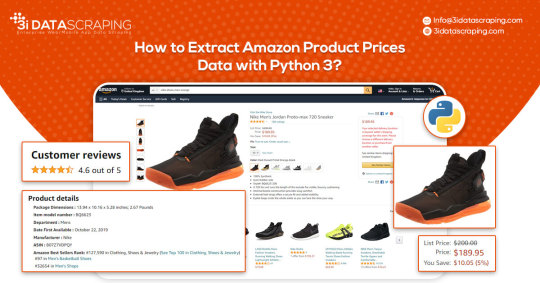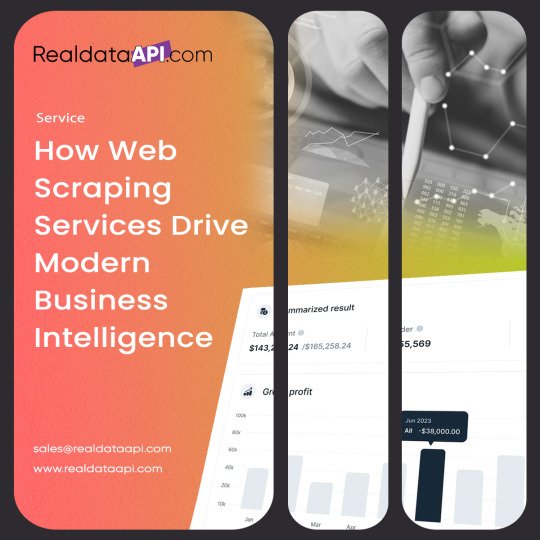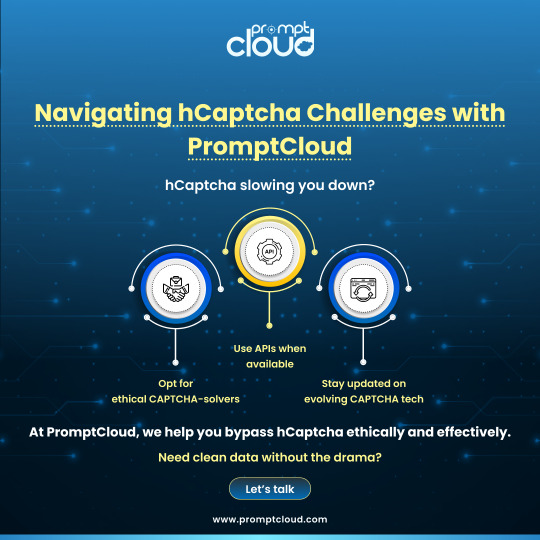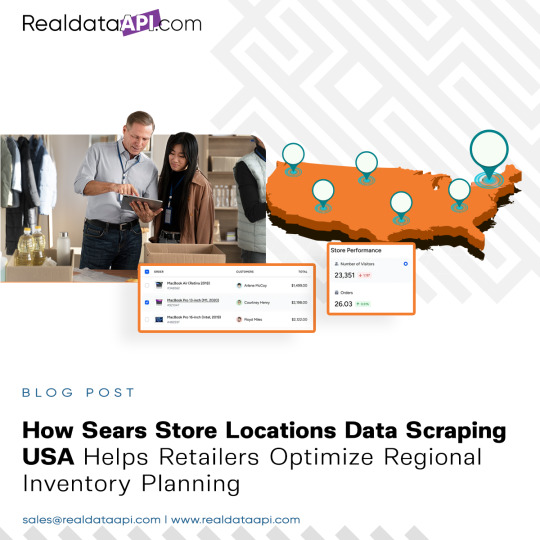#Data extraction
Explore tagged Tumblr posts
Text
I would be extremely pleased if someone else told Jasper to turn down his music, as he apparently refuses to listen to me.
12 notes
·
View notes
Text
🚗 How Can Real-Time Car Rental Data Scraping from #Turo Enhance Your Business Strategy?

In the rapidly evolving #mobility and #carsharing space, having access to real-time rental data is key to staying ahead of market trends. Here's how #carrentaldata scraping from platforms like #Turo can benefit your business: 📊 Track dynamic #pricingmodels and rental rates by region 📈 Monitor trending #vehicletypes and availability 📍 Analyze #locationbased demand for smarter fleet distribution
🧠 Understand seasonal trends for effective #strategicplanning
📉 Benchmark against competitors to adjust #pricingstrategy Whether you're in #automotive, #rentalservices, or #mobilityanalytics, this data provides actionable insights to fine-tune offerings and boost profitability.
2 notes
·
View notes
Text
Market Research with Web Data Solutions – Dignexus
6 notes
·
View notes
Text

Lensnure Solution provides top-notch Food delivery and Restaurant data scraping services to avail benefits of extracted food data from various Restaurant listings and Food delivery platforms such as Zomato, Uber Eats, Deliveroo, Postmates, Swiggy, delivery.com, Grubhub, Seamless, DoorDash, and much more. We help you extract valuable and large amounts of food data from your target websites using our cutting-edge data scraping techniques.
Our Food delivery data scraping services deliver real-time and dynamic data including Menu items, restaurant names, Pricing, Delivery times, Contact information, Discounts, Offers, and Locations in required file formats like CSV, JSON, XLSX, etc.
Read More: Food Delivery Data Scraping
#data extraction#lensnure solutions#web scraping#web scraping services#food data scraping#food delivery data scraping#extract food ordering data#Extract Restaurant Listings Data
2 notes
·
View notes
Text
In search for a Scanner SDK?
With the Docutain SDK you can integrate ready-to-use Scanner and Data Extraction components in your apps for Android, iOS and Windows in less than 1 day!
Try it out: https://sdk.docutain.com
2 notes
·
View notes
Text
How to Extract Amazon Product Prices Data with Python 3

Web data scraping assists in automating web scraping from websites. In this blog, we will create an Amazon product data scraper for scraping product prices and details. We will create this easy web extractor using SelectorLib and Python and run that in the console.
#webscraping#data extraction#web scraping api#Amazon Data Scraping#Amazon Product Pricing#ecommerce data scraping#Data EXtraction Services
3 notes
·
View notes
Text
📊 How Web Scraping Services Drive Modern Business Intelligence

In today’s digital-first world, data is your most valuable asset—if you know how to use it.
This article from RealdataAPI breaks down how web scraping services are helping businesses:
✅ Identify market gaps in real-time
✅ Monitor competitor trends
✅ Make smarter, data-driven decisions
✅ Improve forecasting & reduce guesswork
💬 “Business intelligence isn’t a luxury anymore—it’s a necessity powered by automation and data.”
📩 Contact us: [email protected]
0 notes
Text
High-Volume Web Access Without Detection? Use Residential IP Rotation
Web scraping, price monitoring, and data aggregation often require thousands of daily requests. But doing this without proper IP strategy can quickly trigger anti-bot systems, leading to blocks or bans.
That's where residential IP rotation becomes essential. Unlike datacenter proxies, rotating residential IPs mimic real user behavior by switching IP addresses from genuine ISPs at set intervals. This prevents patterns that detection systems can flag.
With smart IP rotation, every request looks like it's coming from a real person in a different location. It's one of the most effective ways to ensure high-volume access remains undetected.
Solutions like Lycheeip make it easy to access a pool of high-quality rotating residential IPs, offering both scale and stealth for your data-driven projects.
If your web access needs to go big without getting noticed—start with smarter IPs.

1 note
·
View note
Text
How to Automate Document Processing for Your Business: A Step-by-Step Guide
Managing documents manually is one of the biggest time drains in business today. From processing invoices and contracts to organizing customer forms, these repetitive tasks eat up hours every week. The good news? Automating document processing is simpler (and more affordable) than you might think.
In this easy-to-follow guide, we’ll show you step-by-step how to automate document processing in your business—saving you time, reducing errors, and boosting productivity.
What You’ll Need
A scanner (if you still have paper documents)
A document processing software (like AppleTechSoft’s Document Processing Solution)
Access to your business’s document workflows (invoices, forms, receipts, etc.)
Step 1: Identify Documents You Want to Automate
Start by making a list of documents that take up the most time to process. Common examples include:
Invoices and bills
Purchase orders
Customer application forms
Contracts and agreements
Expense receipts
Tip: Prioritize documents that are repetitive and high volume.
Step 2: Digitize Your Paper Documents
If you’re still handling paper, scan your documents into digital formats (PDF, JPEG, etc.). Most modern document processing tools work best with digital files.
Quick Tip: Use high-resolution scans (300 DPI or more) for accurate data extraction.
Step 3: Choose a Document Processing Tool
Look for a platform that offers:
OCR (Optical Character Recognition) to extract text from scanned images
AI-powered data extraction to capture key fields like dates, names, and totals
Integration with your accounting software, CRM, or database
Security and compliance features to protect sensitive data
AppleTechSoft’s Document Processing Solution ticks all these boxes and more.
Step 4: Define Your Workflow Rules
Tell your software what you want it to do with your documents. For example:
Extract vendor name, date, and amount from invoices
Automatically save contracts to a shared folder
Send expense reports directly to accounting
Most tools offer an easy drag-and-drop interface or templates to set these rules up.
Step 5: Test Your Automation
Before going live, test the workflow with sample documents. Check if:
Data is extracted accurately
Documents are routed to the right folders or apps
Any errors or mismatches are flagged
Tweak your settings as needed.
Step 6: Go Live and Monitor
Once you’re confident in your workflow, deploy it for daily use. Monitor the automation for the first few weeks to ensure it works as expected.
Pro Tip: Set up alerts for any failed extractions or mismatches so you can quickly correct issues.
Bonus Tips for Success
Regularly update your templates as your document formats change
Train your team on how to upload and manage documents in the system
Schedule periodic reviews to optimize and improve your workflows
Conclusion
Automating document processing can transform your business operations—from faster invoicing to smoother customer onboarding. With the right tools and a clear plan, you can streamline your paperwork and focus on what matters most: growing your business.
Ready to get started? Contact AppleTechSoft today to explore our Document Processing solutions.
#document processing#business automation#workflow automation#AI tools#paperless office#small business tips#productivity hacks#digital transformation#AppleTechSoft#business technology#OCR software#data extraction#invoicing automation#business growth#time saving tips
1 note
·
View note
Text

#ecommerce#marketing#branding#data scraping#data solutions#data extraction#sephora#ulta beauty#nykaa#amazon
2 notes
·
View notes
Text
We scraped thousands of posts from popular subreddits to uncover real opinions, pros, and cons of moving to New York. Here's what the data tells us.
0 notes
Text

Scraping stopped by hCaptcha? Here’s your cheat sheet for doing it ethically, effectively, and without breaking a sweat. Let PromptCloud help you get back to clean, compliant data. Read more here: https://shorturl.at/Q52nE
#hCaptcha #WebScraping #DataExtraction #AIandAutomation
0 notes
Text
🔍 Turning Retail Data into Smart Inventory Decisions – Here's How Sears Does It!

📈 In today’s rapidly evolving retail landscape, data is no longer just a tool—it's the foundation of competitive advantage. The latest article from Real Data API reveals how scraping Sears store locations data across the USA can lead to smarter, faster, and more efficient inventory planning.
🚀 Key Takeaways:
🏪 Sears’ location data helps track store-wise performance and demographic alignment.
🧠 Enables predictive planning for seasonal demand, product placement, and stock optimization.
📊 Supports AI-driven retail intelligence by analyzing geographic coverage and gaps.
💡 “With hyper-local store data, businesses can prevent overstocking and stockouts—boosting both profit and customer satisfaction.”
🧭 Whether you’re in retail, logistics, or supply chain management, this strategy can reshape how you approach regional planning and demand forecasting.
📩 Contact us: [email protected]
0 notes
Text
The Role of Custom Web Data Extraction: Enhancing Business Intelligence and Competitive Advantage
Your off-the-shelf scraping tool worked perfectly last month. Then your target website updated their layout. Everything broke.
Your data pipeline stopped. Your competitive intelligence disappeared. Your team scrambled to fix scripts that couldn’t handle the new structure.
This scenario repeats across thousands of businesses using off-the-shelf extraction tools. Here’s the problem: 89% of leaders recognize web data’s importance. But standardized solutions fail when websites fight back with anti-bot defenses, dynamic content, or simple redesigns.
Custom extraction solves these problems. AI-powered systems see websites like humans do. They adapt automatically when things change.
This article reveals how custom web data extraction delivers reliable intelligence where off-the-shelf tools fail. You’ll discover why tailored solutions outperform one-size-fits-all approaches. You’ll also get to see a detailed industry-specific guide showing how business leaders solve their most complex data challenges.
Beyond Basic Scraping: What Makes Custom Web Data Extraction Different
Basic tools rely on rigid scripts. They expect websites to stay frozen in time. That’s simply not how the modern web works.
Today’s websites use sophisticated blocking techniques:
Rotating CAPTCHA challenges.
Browser fingerprinting.
IP rate limiting.
Complex JavaScript frameworks that render content client-side.
Custom solutions overcome these barriers. They use advanced capabilities you won’t find in basic tools.
Here’s what sets custom web data extraction apart:
Tailored architecture designed for your specific needs and target sources.
AI-powered browsers that render pages exactly as humans see them.
Intelligent IP rotation through thousands of addresses to avoid detection.
Automatic adaptation when target websites change their structure.
Enterprise-grade scale monitoring millions of pages across thousands of sources.
Basic tools might handle dozens of sites with hundreds of results. But they require constant babysitting from your team. Every website redesign breaks your scripts. Every new blocking technique stops your data flow.
On the other hand, enterprise-grade custom solutions monitor thousands of sources simultaneously. Their scrapers extract millions of data points with pinpoint accuracy and adapt automatically when sites change structure.
But here’s what really matters: intelligent data processing.
Raw scraped data is messy and inconsistent. Tailored solutions transform this chaos into structured intelligence by:
Cleaning and standardizing information automatically.
Matching products across different retailers despite varying naming conventions.
Identifying and flagging anomalies that could indicate data quality issues.
Structuring unstructured data into analysis-ready formats.
Industry research reveals that the technical barriers are real. 82% of organizations need help overcoming data collection challenges:
55% face IP blocking.
52% struggle with CAPTCHAs.
56% deal with dynamic content that traditional tools can’t handle.
This is why sophisticated businesses partner with experienced providers like Forage AI. We’ve perfected these capabilities over decades of experience and provide you with enterprise-grade capabilities without the headaches of maintaining complex infrastructure.
Now that you understand what makes custom extraction powerful, let’s see how this capability transforms the core business functions that drive competitive advantage.
Transforming Business Intelligence Across Key Functions
Custom web data extraction doesn’t just collect information. It revolutionizes how organizations understand their markets, customers, and competitive landscape.
Here’s how it transforms three critical business intelligence areas:
Real-Time Competitive Analysis
Forget checking competitor websites once a week. Custom extraction provides continuous competitive surveillance. It captures changes the moment they happen.
Your system monitors:
Pricing changes and product launches across competitor portfolios.
Executive appointments and organizational restructuring at target companies.
Regulatory filings and compliance updates from government sources.
Market expansion and strategic partnerships across your industry.
The competitive advantage:
Shift from reactive to proactive strategic positioning.
Respond within hours instead of days when competitors make a move.
Anticipate market shifts before other players spot them.
Position strategically based on live competitive intelligence.
Customer Intelligence & Market Insights
Understanding your customers means looking beyond your own data. You need to see how they behave across the entire market.
Custom extraction aggregates customer sentiment, preferences, and feedback from every relevant touchpoint online.
Comprehensive customer intelligence includes:
Review patterns across all major platforms to identify valued features.
Social media conversations to spot emerging trends before mainstream awareness.
Forum discussions to understand unmet needs representing new opportunities.
Purchase behavior signals across competitor platforms and review sites.
Strategic insights you gain:
Why customers choose competitors over you.
What actually drives their purchase decisions.
How their preferences evolve over time.
Which features and benefits resonate most strongly with your target market.
Operational Intelligence
Smart organizations use web data to optimize operations beyond marketing and sales. Custom extraction provides the external intelligence that makes internal operations more efficient and strategic.
Supply chain optimization through:
Supplier monitoring of websites, industry news, and regulatory announcements.
Commodity price tracking and shipping delay alerts.
Geopolitical event monitoring that could affect procurement strategies.
Risk management enhancement via:
Early warning signals from news sources and regulatory sites.
Compliance issue identification before they impact operations.
Reputation threat monitoring across digital channels.
Strategic planning support including:
Competitor expansion intelligence and market opportunity identification.
Industry trend analysis that shapes future strategy.
Market condition assessment for long-term decision-making.
This operational intelligence enables informed strategic planning. You gain comprehensive context for critical business decisions.
With these transformed business functions providing superior market intelligence, you’re positioned to create sustainable competitive advantages. But how exactly does this intelligence translate into lasting business benefits? Let’s examine the specific advantages that compound over time.
Creating Sustainable Competitive Advantages
The real power of custom web data extraction isn’t just better information. It’s the systematic advantages that compound over time. Your organization becomes increasingly difficult for competitors to match.
Speed and Agility
Research shows that 73% of organizations achieve quicker decision-making through systematic web data collection. But speed isn’t just about faster decisions. It’s about being first to market opportunities.
Immediate competitive benefits:
Capitalize on competitor pricing errors immediately rather than discovering them days later.
Adjust strategy while competitors are still gathering information.
Position yourself for new opportunities while others are still analyzing.
Compounding speed advantages:
Each quick response strengthens your market position. Customers associate your brand with market leadership. New opportunities become easier to capture.
Consider dynamic pricing strategies. They adjust in real-time based on competitor actions, inventory levels, and demand signals. Organizations using this approach report revenue increases of 5-25% compared to static pricing models.
Complete Market Coverage
While competitors rely on off-the-shelf tools that have limited coverage, custom extraction provides 360-degree market visibility. Industry research indicates that 98% of organizations need more data of at least one type. Tailored solutions eliminate this limitation entirely.
Your monitoring advantage includes:
Direct competitors and adjacent markets that could affect your business.
Pricing, inventory, promotions plus customer sentiment and regulatory changes.
Primary markets plus possibilities of international expansion.
Current conditions and emerging trends before they become obvious.
The scale difference is striking. Simple extraction tools can only handle dozens of products from a few sites before breaking down. Custom extraction monitors thousands of sources continuously with high accuracy. This creates market intelligence that’s simply impossible with off-the-shelf solutions.
Predictive Analytics Capability
With comprehensive, real-time data flowing systematically, you can build predictive capabilities. You anticipate market changes rather than just responding to them.
This is where Forage AI’s expertise becomes critical. We process data from 500M+ websites with AI-powered techniques, transforming raw information into strategic insights. 53% of organizations use public web data specifically to build the AI models that power these predictive insights.
Predictive intelligence detects:
Customer churn signals weeks before accounts show obvious warning signs.
Supply chain disruptions preventing inventory shortages before they impact operations.
Fraud detection patterns identifying suspicious activities before financial losses occur.
Lead scoring optimization predicting which prospects convert before competitors spot them.
The combination of speed, coverage, and prediction creates competitive advantages that are difficult for rivals to replicate. They’d need to invest in similar systematic data capabilities to match your market intelligence. By that time, you’ve gained additional advantages through earlier implementation.
These competitive benefits become even more powerful when applied to specific industry challenges. Let’s take a look at how different sectors leverage these capabilities for measurable ROI.
Industry-Specific Applications That Drive ROI
Different industries face unique competitive challenges. Custom web data extraction solves these in specific, measurable ways.
E-commerce & Retail
Retail operates in the most price-transparent market in history. 75% of retail organizations collect market data systematically while 51% use it specifically for brand health monitoring across multiple channels.
But here’s what sets custom extraction apart from basic extraction tools:
Visual Intelligence Engines: Extract and analyze product images across 1000+ competitor sites to identify color trends, style patterns, and merchandising strategies. Spot emerging visual trends 48 hours before they go mainstream by handling JavaScript-heavy product galleries that load dynamically as users scroll – something basic tools simply can’t manage.
Review Feature Mining: Go beyond sentiment scores. Extract unstructured review data to identify specific product features customers mention that aren’t in your specs. When customers repeatedly request “pockets” in competitor dress reviews, you’ll know before your next design cycle.
Micro-Influencer Discovery: Scrape social media platforms to find micro-influencers already organically mentioning your product category. Identify authentic voices with engaged audiences before they’re on anyone’s radar.
Stock Pattern Prediction: Monitor availability patterns across competitor sites to predict stockouts 7-10 days in advance. This isn’t just checking “in stock” labels – it’s analyzing restocking frequencies, quantity limits, and shipping delays.
Financial Services
Financial institutions face unique challenges around risk assessment, regulatory compliance, and market intelligence.
Custom extraction delivers capabilities impossible with standard tools:
Alternative Data Signals: Extract job postings, online company reviews, and web traffic patterns to assess company health 90 days before earnings reports. When a tech company suddenly posts 50 new sales positions while their engineering hiring freezes, you’ll spot the pivot early.
Multi-Language Regulatory Intelligence: Monitor 200+ regulatory websites across dozens of languages simultaneously for policy changes. Detect subtle shifts in compliance requirements weeks before official translations appear. This requires sophisticated language processing beyond basic translation.
ESG Risk Detection: Scrape news sites, NGO reports, and social media for real-time Environmental, Social, and Governance risk indicators. Identify supply chain controversies or environmental violations before they impact investment portfolios.
High-Frequency Data Extraction: Handle encrypted financial documents and real-time feeds from trading platforms. Process complex data structures that update milliseconds apart while maintaining accuracy.
Healthcare
Healthcare organizations need extraction capabilities that handle complex medical data and compliance requirements:
Clinical Trial Competition Intelligence: Extract real-time patient enrollment numbers and protocol changes from ClinicalTrials.gov and competitor sites. Know when rivals struggle with recruitment or modify trial endpoints. This means parsing complex medical documents and research papers.
Physician Opinion Tracking: Monitor medical forums and conference abstracts for emerging treatment preferences. Detect when specialists start discussing off-label uses or combination therapies 6 months before publication.
Drug Shortage Prediction: Combine Food and Drug Administration databases with pharmacy inventory signals to predict shortages 2-3 weeks early. Extract data from multiple formats while handling medical terminology variations.
Patient Journey Mapping: Analyze anonymized patient experiences from health forums to understand real treatment pathways. Navigate HIPAA-compliant extraction while capturing meaningful insights.
Manufacturing
Manufacturing requires extraction solutions that handle technical complexity across global supply chains:
Component Crisis Detection: Monitor 500+ distributor websites globally for lead time changes on critical components. Detect when a key supplier extends delivery from 8 to 12 weeks before it impacts your production line.
Patent Innovation Tracking: Extract and analyze competitor patent filings to identify technology directions 18 months before product launches. Parse technical specifications and CAD file references to understand true innovation patterns.
Quality Signal Detection: Mine consumer forums and review sites for early product defect patterns. Identify quality issues weeks before they escalate to recalls. This requires understanding technical language across multiple industries.
Sustainability Compliance Monitoring: Extract supplier ESG certifications, audit results, and environmental data from diverse sources. Track your entire supply chain’s compliance status in real-time across different reporting standards.
The Bottom Line: Measurable Impact Across Your Business
When you add it all up, custom web data extraction delivers three types of measurable value:
Immediate efficiency gains through automated intelligence gathering, reducing data processing time by 30-40% while improving decision speed and accuracy.
Revenue acceleration via dynamic pricing optimization (5-25% increases), market timing advantages, and strategic positioning based on comprehensive market understanding.
Risk reduction through early warning systems that spot threats before they impact operations, enabling proactive responses rather than costly reactive measures.
Organizations implementing these capabilities systematically are 57% more likely to expect significant revenue growth. The compound effect means early adopters gain advantages that become increasingly difficult for competitors to match.
These industry applications prove a key point. Sophisticated web data extraction isn’t just a technical capability. It’s a strategic business tool that drives measurable edge across diverse sectors and use cases.
Conclusion: Custom Data Extraction as Competitive Necessity
The evidence is clear. Organizations that systematically leverage web data consistently outperform those relying on manual methods or standard extraction techniques.
89% of business leaders recognize data’s importance. But only those implementing custom extraction solutions capture its full competitive potential.
This isn’t about having better tools. It’s about fundamentally transforming how you understand and respond to market dynamics. Custom web data extraction provides the systematic intelligence foundation that modern competitive strategy requires.
The question isn’t whether to invest in these capabilities. It’s how quickly you can implement them before competitors gain similar advantages.
Ready to stop guessing and start knowing? Contact Forage AI to discover how custom web data extraction can transform your competitive positioning and business intelligence capabilities.
0 notes
Text
Beauty filters: Digital privilege and data exposure
Beyond promoting heteronormative beauty standards through content visibility, the digital world continuously reinforces the aesthetic privilege through beauty filters. These filters operate by detecting a face through the camera and enabling users to modify their images by adjusting colors, adding stickers, editing facial structure and body proportions (Schipper, 2018, as cited in Lavrence & Cambre, 2020). With the advanced technology, these filters have been developed to precisely scan users’ faces and offer users with features to comprehensively and structurally reconfigure their facial attributes (Lavrence & Cambre, 2020).

It’s no surprise that these filters quickly attract users' attention and preference. That is because they boost users’ confidence by receiving positive social engagement with their conventionally prettier images. However, there is a growing wave of criticism around the beautifying effect of filters. For instance, Arata, a frequent Snapchat filter user, showed her frustration when her selfie was unrealistically adjusted to “stereotypical form of beauty” (Barker, 2020, p. 209). This highlights a significant issue of how filters systematically modify users’ features to align with the Western beauty norms, such as white skin, thin face shape, large eyes and plump lips (Barker, 2020, p. 209).
Therefore, the platform has rapidly evolved filter technology to provide more “realistic” images. Instead of exaggerating Western beauty ideals, the algorithms tend to refine users’ facial features in a way that is hard to see but still enhances their attractiveness. Peres Martins (2017) shared that Snapchat’s new filter “barely changed anything but enough” for her to notice that she did look prettier (as cited in Barker, 2020, p. 211). Or the development of fotor.com, a beauty filter website that provides advanced tools to transform selfies into "natural" beauty images. Consequently, it quickly satisfies digital users since it advocates the most “realistic” and diverse beauty appearance yet yielding lots of social engagement.

However, the deadly point is that, in order to create such a natural and “real” appearance, the platform algorithm must maximize their efforts in collecting and analyzing users’ biometric data. In other words, the more seamlessly a filter blends with reality, the deeper the algorithm digs into our facial details. That is because machines convert things that we see, such as facial contrast, eyes, nose and lip into computational language, allowing algorithms to identify and manipulate users’ facial features from different angles (Rettberg, 2017, pp. 89-90).

As our facial identities are continuously being captured and stored online (Retberg, 2017, p. 89), the risk of biometric data misuse grows significantly. There will be a potential chance that these data could be illegally sold, leaked or stolen, which could lead to a digital exposure crisis. Then, it might be used for unauthorized deep fake content, which can directly harm the users’ privacy and reputation.

It is clear that filters might seem like something fun but they are gradually reinforcing narrow beauty ideals and quietly stealing personal data. The more we use, the more freely we allow the system to use our biometric data. So next time, better thought twice while scrolling through several filters for your own safety.
References
Barker, J. (2020). Making-up on mobile: The pretty filters and ugly implications of Snapchat. Fashion, Style & Popular Culture, 7, 207-221.
Lavrence, C., & Cambre, C. (2020). “Do I Look Like My Selfie?”: Filters and the digital-forensic gaze. Social Media + Society, 6(4). https://doi.org/10.1177/2056305120955182
Rettberg, J. W. (2017). Biometric Citizens: Adapting our selfies to machine vision. In A, Kuntsman (Eds.), Selfie citizenship (pp. 89–96). Springer International Publishing. https://doi.org/10.1007/978-3-319-45270-8_10
0 notes